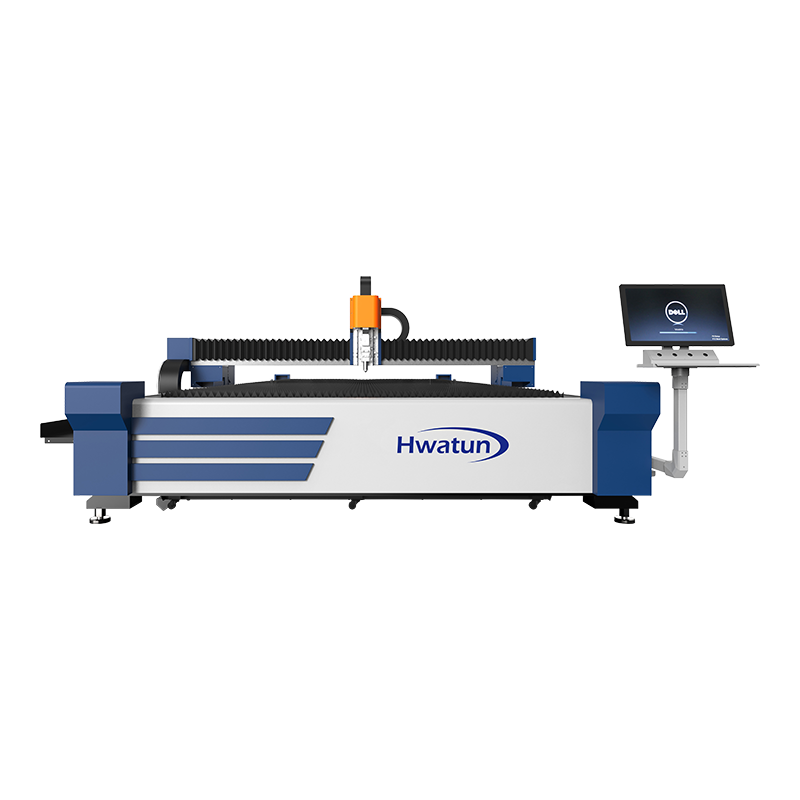Web Menu
Product Search
Exit Menu
What materials can CNC Laser Cutting Machine cut?
CNC laser cutting machines are powerful, precise tools used across various industries for cutting, engraving, and etching different types of materials. Their versatility, speed, and accuracy make them ideal for manufacturing, prototyping, and design applications. One of the most frequently asked questions about CNC laser cutters is: What materials can they cut? The answer is broad, as modern laser cutters are capable of processing a wide range of materials, including metals, plastics, wood, fabrics, glass, and more. Let’s explore the most common material categories suitable for CNC laser cutting.
1. Metals
Laser cutting machines are especially effective for cutting metals, particularly with high-power CO₂ or fiber lasers.
Carbon Steel: One of the most commonly cut metals. Thickness up to 25 mm can be cut cleanly with a fiber laser.
Stainless Steel: Ideal for both decorative and industrial parts. Laser cutting provides a clean, oxidation-free edge.
Aluminum: Laser cutting aluminum can be challenging due to its reflective surface, but fiber lasers handle it efficiently with minimal burrs.
Copper and Brass: These reflective materials require high-powered fiber lasers. Special coatings or gases can improve cutting efficiency.
Titanium and Alloys: Frequently used in aerospace and medical industries due to their strength-to-weight ratio, these metals can also be precisely cut using lasers.
2. Plastics and Polymers
Plastics respond well to laser cutting, though some require caution due to toxic fumes or melting behavior.
Acrylic (PMMA): One of the most popular laser-cut materials. Produces a smooth, flame-polished edge.
Polycarbonate: Can be cut in thin sheets but may discolor or char. Not ideal for detailed engraving.
Polyethylene (PE) and Polypropylene (PP): These can be cut, but may melt or produce less clean edges.
ABS: Possible to cut, but generates fumes and has a higher risk of catching fire.
PVC: Not recommended—produces toxic chlorine gas that can damage equipment and pose health risks.
3. Wood and Wood-Based Products
Laser cutters are well suited for woodworking projects, especially for engraving and intricate designs.
Plywood: Cuts well, though quality varies depending on glue content and number of layers.
MDF (Medium-Density Fiberboard): Cuts cleanly, but emits more smoke due to adhesives and resins.
Balsa Wood: Easy to cut, lightweight, ideal for models and prototypes.
Solid Wood (Maple, Oak, Walnut, etc.): Laser cutting can produce detailed, decorative results. Thickness and grain can affect results.
4. Paper and Cardboard
Laser cutters excel at precision work on thin and delicate materials like paper-based products.
Paper: Ideal for invitations, stencils, and art. Produces clean, sharp edges without physical pressure.
Cardboard: Easy to cut and engrave, commonly used in packaging, prototyping, and architectural models.
Chipboard: Slightly denser than cardboard but still suitable for laser cutting.
5. Textiles and Fabrics
Laser cutting offers precise, contactless processing of fabrics without fraying or distortion.
Natural Fabrics (Cotton, Wool, Silk): Can be cut easily, though slight discoloration may occur.
Synthetic Fabrics (Polyester, Nylon, Felt): Laser seals the edges, preventing fraying. Be cautious of fumes.
Leather and Suede: Cut cleanly and engraved beautifully. Natural leather responds better than synthetic.
6. Glass and Ceramics
Though not suitable for full-depth cutting, laser machines can etch and engrave these materials with precision.
Glass: Laser engraving can create frosted effects, logos, or designs on glassware and mirrors.
Ceramics: While not cuttable, they can be surface marked for decorative or functional purposes.
7. Foams and Rubbers
Laser cutters can work on soft materials like foam and rubber, often used in packaging and gaskets.
Polyethylene Foam: Can be cut for custom inserts or packaging.
Neoprene and EVA Foam: Popular for crafts, cosplay, and seals. Lasers offer clean cuts and intricate shapes.
Rubber (Natural and Synthetic): Can be cut, but some variants produce strong odors or residue.
8. Composites and Laminates
These layered materials may require more care but are still suitable for laser cutting.
Fiberglass: Can be cut with lasers, but releases harmful fumes—requires good ventilation.
Laminate Sheets (e.g., Formica): Often used in furniture and interior design; laser cutters provide detailed cuts.
Carbon Fiber: Cuttable with lasers, especially thin sheets. May produce fine dust—protective gear recommended.
Materials to Avoid
While CNC laser cutters are highly versatile, certain materials should not be used due to safety or machine damage:
PVC (Polyvinyl Chloride): Releases toxic chlorine gas.
Teflon (PTFE): Produces harmful fumes.
Polycarbonate (thick sheets): Can discolor and catch fire.
HDPE and Styrene: Difficult to cut cleanly, prone to melting.
CNC laser cutting machines are compatible with a wide range of materials—from metals and plastics to wood, fabric, and foam. The type of laser (CO₂, fiber, or diode) and its power rating determine which materials can be processed effectively. While many materials are suitable for laser cutting, safety precautions are essential, especially with synthetic materials that release fumes. Always consult your machine’s specifications and use proper ventilation to ensure optimal results.
By understanding what materials can be laser cut, users can unlock the full potential of CNC laser technology in both creative and industrial applications.

News categories
Product categories
Related Products
 +86-159 5138 1316
+86-159 5138 1316 +86 180 6819 3096
+86 180 6819 3096 [email protected]
[email protected] Group 4, Xinba Village, Binhai New Area (jiaoxie Town), Laoba Port, Nantong City, Jiangsu, China.
Group 4, Xinba Village, Binhai New Area (jiaoxie Town), Laoba Port, Nantong City, Jiangsu, China.
Copyright © Nantong Hwatun Heavy Machine Tool Co., Ltd. All Rights Reserved.

 Eng
Eng  简体中文
简体中文 Español
Español русский
русский







